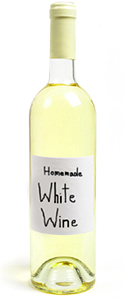 In part I of this III part series we introduced you to the effects oxygen can have on a wine. In this post, part II, we’ll start to go over what can be done to keep the effects of oxidation under control.
In part I of this III part series we introduced you to the effects oxygen can have on a wine. In this post, part II, we’ll start to go over what can be done to keep the effects of oxidation under control.
Oddly enough, limiting air exposure during the fermentation is not the answer. Air is needed for the wine to ferment to its fullest potential. The carbon dioxide that is produced during the fermentation keeps excessive amounts of air from coming in contact with the wine. In fact, the fermentation can be conducted completely exposed in an open fermenter as opposed to a wine carboy with no problems at all.
It is after the fermentation, that air can become an issue. Care should be given from this point on, all the way through to the bottling of the homemade wine. Air contact should be kept to an absolute minimum during this time. This means that any head-space that is in the wine carboy or fermenter should be eliminated. This can be done in several ways:
- The wine can be moved to a smaller, more appropriated-sized carboy or even several gallon glass carboys.
- Glass marbles that have been sanitized with sodium metabisulfite can be put into the wine to increase its volume.
- A similar wine can be added to the batch to increase its volume. This can be wine you’ve made or even store bought wine.
Limiting air exposure also means that great care should be taken when racking the wine. In the last part of this III part series we’ll go over the issues faced when racking a wine and the role sodium metabisulfite plays in the process.
———————————————————————————————————
Ed Kraus is a 3rd generation home brewer/winemaker and has been an owner of E. C. Kraus since 1999. He has been helping individuals make better wine and beer for over 25 years.
